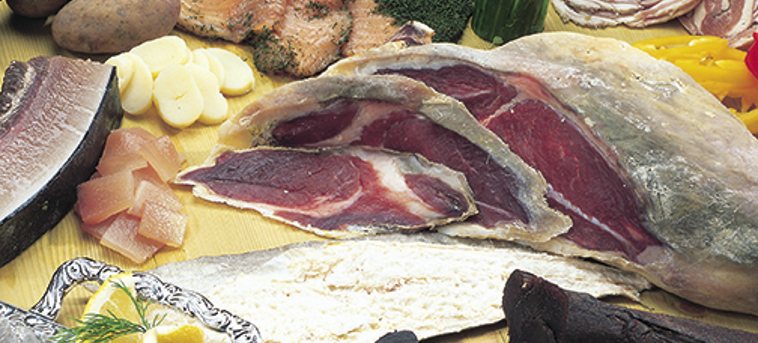
Faroese food culture
Faroese food culture is unique, shaped by weather and a centuries-long struggle for survival, despite all odds.
When asked about their favourite dishes, many Faroese will sing the praises of local dishes, be they whale meat and blubber, wind-dried lamb, seabirds, fish or geese.
The Faroese eat their lamb fresh, ræst and wind-dried. Ræst (fermentet) is unique to the Faroes, a special method of semi-drying meat and fish. It is characterised by its strong umami flavour, the fifth flavour after sour, sweet, bitter and salty. Traditionally, ræst lamb is served with potatoes and root vegetables.
Chefs around the world have started using ræst to create new dishes for their restaurants. The ræst flavour is becoming known as the unique Faroese contribution to international cuisine.
Dried lamb is aged in traditional drying sheds. It is aged longer than ræst lamb. ”Sharp Meat” (skerpikjøt in Faroese) is the most popular version of dried lamb and is served at most Faroese celebrations.
In the Faroes, fish and whale meat is also eaten fresh, ræst and dried as well as salted. Dried fish, dried whale meat, dry-salted whale blubber and potatoes are often served on festive occasions.
It is also common to boil whale meat and blubber, served with potatoes and mustard, as a standard family meal. Many also like to cut whale meat into steaks, which are fried and served with gravy.
In the past, to age and dry lamb, fish and whale meat was the only method to preserve food in the Faroes. Today the freezer also serves that function, but the traditional ways of preparing and storing Faroese food are such an integral part of Faroese cultural identity that they have survived from the days of the first settlers in the Viking age.
NATURAL
REGULATED
COMMUNAL
SUSTAINABLE


